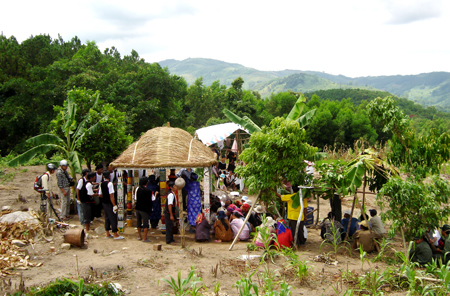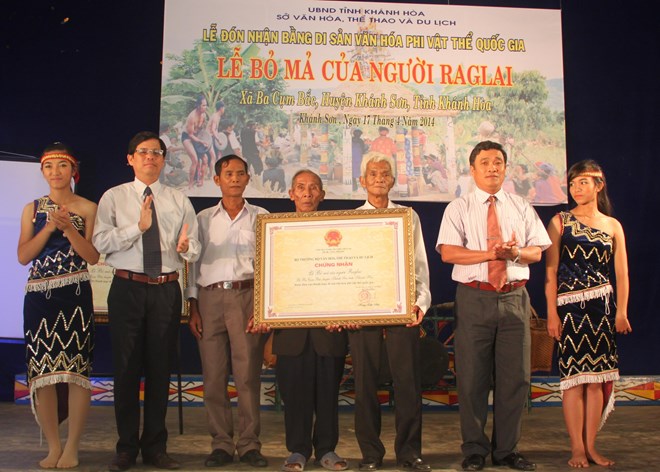 |
The annual ceremony is timetabled for between March and April, following the group’s food harvest.
With such a belief, they organize a ceremony to say the last farewell to the deceased after the 1st or 2nd anniversary of their death.
The Raglai live with a high community spirit so all villagers attend the last ritual to see the dead off to the world of spirits. They believe that this ceremony cuts the links between the living and the dead.
Mau Quoc Tien, a researcher of the Raglai culture, said, "This is one of the oldest and most important festivals of the Raglai. The livings are responsible for organizing the ritual to show their sentiment to the deceased."
The family prepares offerings including pigs, chickens, and wine months before the ceremony. The villagers will help build a tomb which is decorated with a wooden boat engraved with the images of birds and beasts.
The wooden boat, which is called Kagor, carries symbolic gifts for the departed. On the altar, they hang a bowl above the portrait of the deceased in which the spirit will reside.
Mau Xuan Danh, a Raglai man, noted, "In the past, the bowl was given to the next generations. But now they don’t keep it after the last farewell ceremony." The ceremony lasts 3 days with several activities. On the first day, they prepare offerings and invite relatives near and far to the ceremony. The offerings include 3 small jars of alcohol, 3 pigs, a cow or a buffalo, chickens, ducks, and local farm products.
The master of ceremony, who is the patriarch, will practice a ritual to inform the dead of the tomb and the worshiping time. He dances, cries, and prays the ancestors for accepting the spirit to their world.
On the second day, all relatives come to have a meal together to see off the dead. The patriarch leads the relatives to the tomb crying and playing gongs to invite the spirit home for dining. All relatives and villagers eat, drink wine, dance, and sing together by the fire over the night.
On the third day, men carry the offerings to the tomb and people stand around to say the last farewell to the deceased.
Mau Quoc Tien shared, "In the past they buried gongs, jars, trays, and pots with the dead but now they use symbolic items. They keep the real products for the offspring."
The last farewell ceremony consists of the cultural and artistic values of architecture, engraving, painting, music, and dancing.
 |













COMMENTS